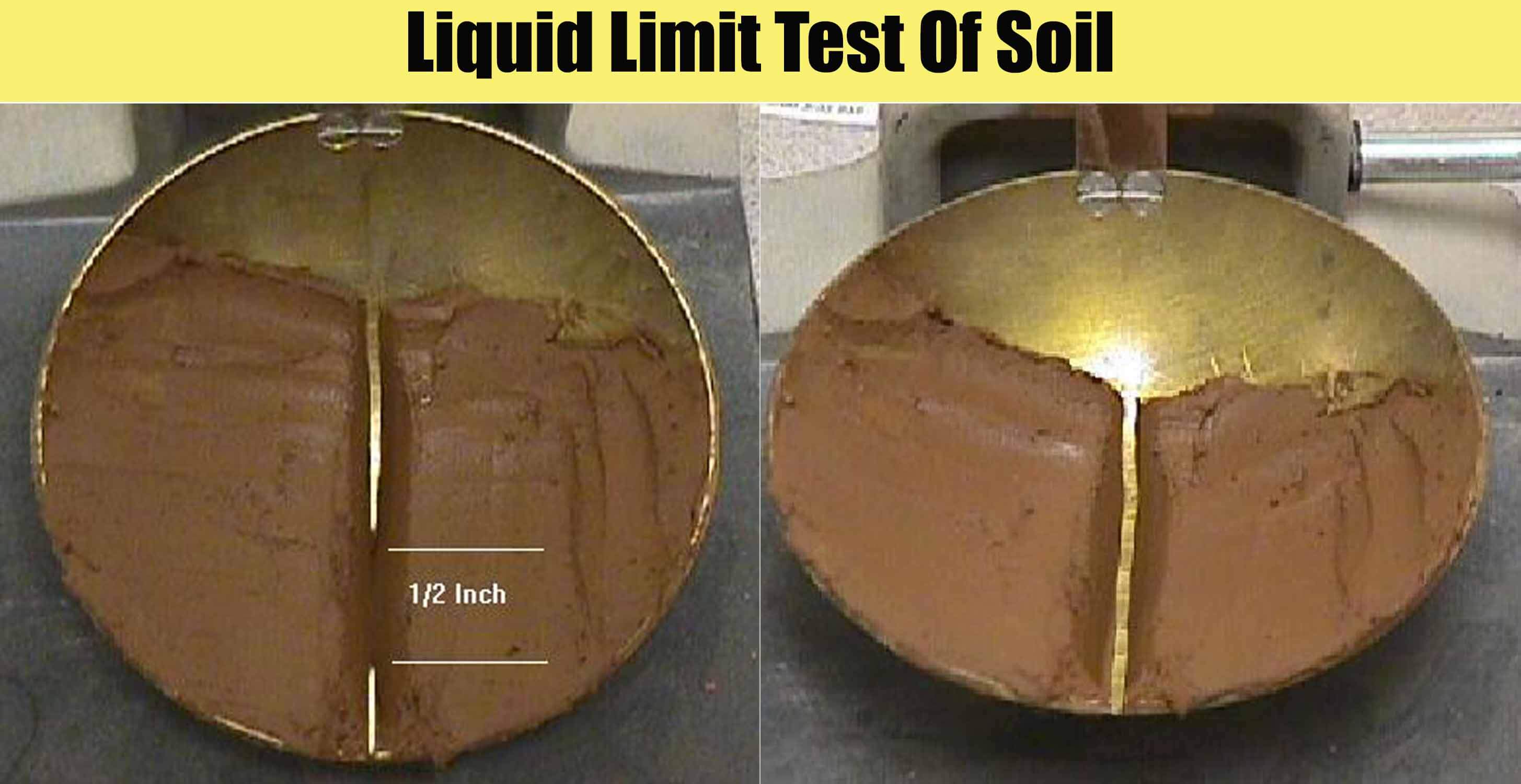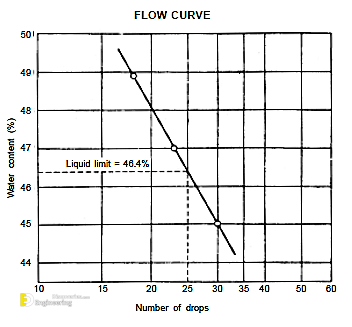Aim
To determine the liquid limit of soil as per IS: 2720 (Part 5) – 1985.
Principle
The liquid limit of fine-grained soil is the water content at which soil behaves practically like a liquid, but has small shear strength. Its flow closes the groove in just 25 blows in Casagrande’s liquid limit device.
Apparatus
1- Casagrande’s liquid limit device
2- Grooving tools of both standard and ASTM types
3- Oven
4- Evaporating dish
5- Spatula
6- IS Sieve of size 425μm
7- Weighing balance, with 0.01g accuracy
8- Wash bottle
9- Air-tight and non-corrodible container for determination of
moisture content
Preparation of sample
1- Air-dry the soil sample and break the clods. Remove the organic matter like tree roots, pieces of bark, etc.
2- About 100g of the specimen passing through 425μm IS Sieve is mixed thoroughly with distilled water in the evaporating dish and left for 24hrs. for soaking.
Procedure
1- Place a portion of the paste in the cup of the liquid limit device.
2- Level the mix so as to have a maximum depth of 1cm.
3- Draw the grooving tool through the sample along the symmetrical axis of the cup, holding the tool perpendicular to the cup.
4- For normal fine-grained soil: The Casagrande’s tool is used to cut a groove 2mm wide at the bottom, 11mm wide at the top and 8mm deep.
5- For sandy soil: The ASTM tool is used to cut a groove 2mm wide at the bottom, 13.6mm wide at the top and 10mm deep.
6- After the soil pat has been cut by a proper grooving tool, the handle is rotated at the rate of about 2 revolutions per second and the no. of blows counted, till the two parts of the soil sample come into contact for about 10mm length.
7- Take about 10g of soil near the closed groove and determine its water content.
8- The soil of the cup is transferred to the dish containing the soil paste and mixed thoroughly after adding a little more water. Repeat the test.
9- By altering the water content of the soil and repeating the foregoing operations obtain at least 5 readings in the range of 15 to 35 blows. Don’t mix dry soil to change its
consistency.
10- the Liquid limit is determined by plotting a ‘flow curve’ on a semi-log graph, with no. of blows as abscissa (log scale) and the water content as ordinate and drawing the best
straight line through the plotted points.
11- Water content corresponding to 25 blows, is the value of the liquid limit.
Results
Report the water content corresponding to 25 blows, read from the ‘flow curve’ as the liquid limit.
A sample ‘flow curve’ is as follows



